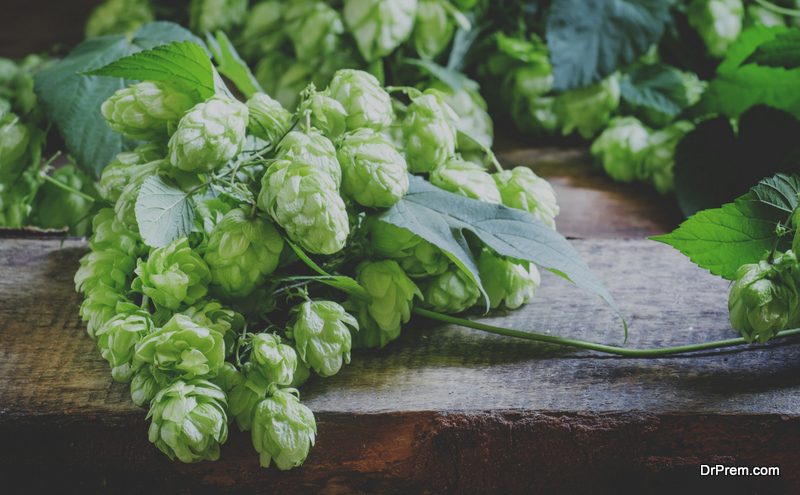Your backyard garden probably isn’t a 50-acre orchard, but you can still benefit from using commercial growing and harvesting techniques. Commercial growing techniques aren’t just used by commercial farms – they’re used by the majority of people who enter their produce in county fairs. You have every reason to use them in your garden, no matter how small it is.
1. Start with disease-resistant seeds
 Your seeds matter. Yes, the soil and climate matter, but harvesting high-quality crops begins with high-quality seeds.
Your seeds matter. Yes, the soil and climate matter, but harvesting high-quality crops begins with high-quality seeds.
Look for high-yielding seeds that have gone through rigorous testing in your local conditions. You need seeds that demonstrate solid disease resistance to produce expected yields.
There’s nothing worse than meticulously tending to a garden for weeks, only to discover your crops have been devoured by insects or riddled with disease. You may not be selling your crops commercially, but you and your family (and friends) will be eating what you grow. Besides, without a good harvest, you won’t have a reason to use your coolest kitchen gadgets.
2. Don’t allow bean pods to mature
Beans can be tricky. They need to be harvested every three to five days. Don’t allow the pods to mature or the bean plant will stop producing.
3. Harvest fruit early and manage your temperatures
 If there’s one thing you can learn from county fair participants, it’s that heat delay will slow down harvesting. For example, when temperatures rise above 90 degrees Fahrenheit, tomato pigment won’t develop as red. Instead, it might look orange or yellow. This can be misleading and cause you to think the fruit isn’t ripe.
If there’s one thing you can learn from county fair participants, it’s that heat delay will slow down harvesting. For example, when temperatures rise above 90 degrees Fahrenheit, tomato pigment won’t develop as red. Instead, it might look orange or yellow. This can be misleading and cause you to think the fruit isn’t ripe.
Don’t wait until fruit is completely ripe to harvest. Once the skin of a tomato has turned slightly pink, it won’t receive any further nutrients. You can harvest a tomato at this stage without sacrificing flavor or quality.
According to county fair experts, once you pick a pink-tinted tomato, placing it in direct sunlight will help it to develop a proper red pigment and a fuller flavor. Picking pink-tinted tomatoes also helps the rest of the fruit ripen faster.
There are some exceptions to an early harvest. For instance, watermelons won’t sweeten after they’ve been picked so don’t harvest them too early. To know if a watermelon is ripe, slap it with your hand; you want to hear a hollow thump. Look underneath for a pale yellow spot. The tendrils attached to the watermelon’s stem should be dark and withered.
If you’re lucky enough to have an avocado tree, you’ll be pleased to know avocados ripen off the tree. Don’t pick too many at once, unless you’re having a party that requires plenty of guacamole.
4. Start early and end late
Make your growing season last as long as possible. In the spring, use cold frames, cloches, and tunnels to extend your season by at least a month. In the fall, protect your crops from frost and deer with row covers. This will also extend the harvest season for cold-tolerant greens and root crops like carrots and beets.
If you’re growing potatoes, just leave them in the ground until you’re ready to eat them. Just be sure to dig them up before the first frost or they’ll turn into compost.
5. Grow perennial crops when possible
 Although perennial crops lose some of their yield over time, they’re easier to work with. Depending on the size of your garden, you may not want to cultivate the soil for every crop each year. Perennials don’t need to be planted each year, so you’ll save time and effort. It’s good for the earth, too.
Although perennial crops lose some of their yield over time, they’re easier to work with. Depending on the size of your garden, you may not want to cultivate the soil for every crop each year. Perennials don’t need to be planted each year, so you’ll save time and effort. It’s good for the earth, too.
6. Pick summer squash often
You may want to start gathering recipes for summer squash. If you’ve grown squash, you know they will keep growing until they’re too big to carry. When it comes to squash, bigger is not better. The bigger a squash gets, the worse it tastes.
Pick your squash often. Depending on the variety, small might be the size of your palm. Check every day if you can. Small squash will taste sweet, and some varieties taste sweet and delicious right off the vine – skin and all.
Enjoy your harvest
 Most importantly, enjoy your harvest. Make your kids some healthy meals and invite your friends and neighbors over for dinner. Give people a taste of homegrown, healthy food, and don’t forget to send them home with some of that delicious squash you just picked.
Most importantly, enjoy your harvest. Make your kids some healthy meals and invite your friends and neighbors over for dinner. Give people a taste of homegrown, healthy food, and don’t forget to send them home with some of that delicious squash you just picked.
Article Submitted By Community Writer




